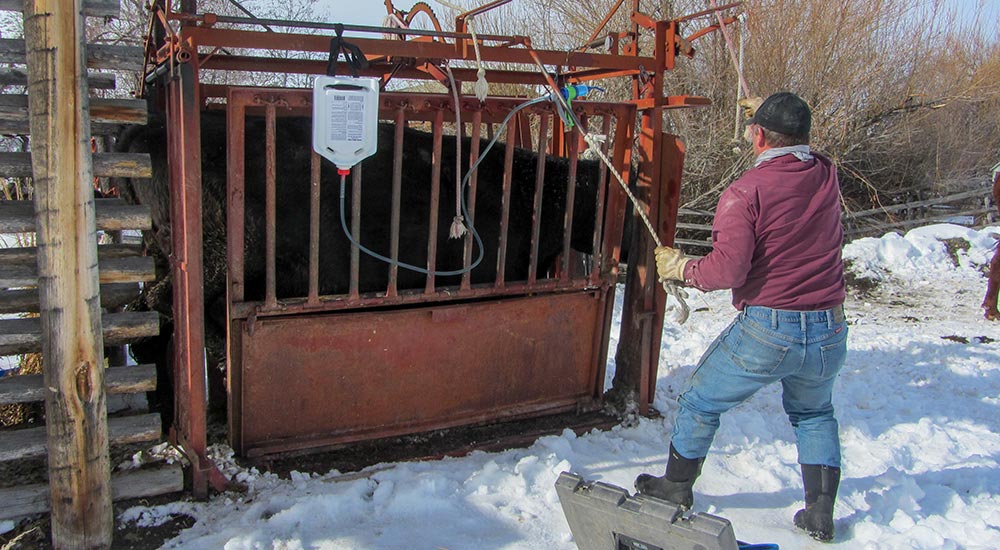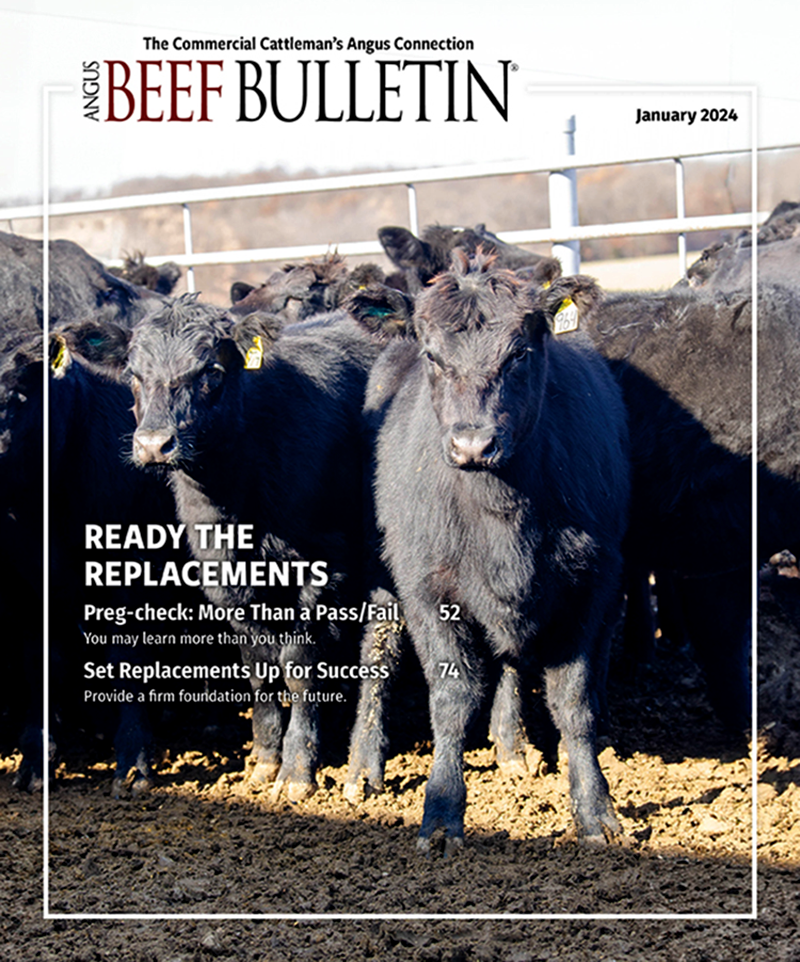
Check Facilities in Cold First
When working cattle in the cold, make sure facilities are ready to go to ensure comfort for all.
Inclement weather creates more challenge when processing cattle — whether preg-checking, vaccinating, weaning, or giving cows precalving vaccinations or delousing treatments in mid-winter. Veterinarian Eric Laporte, of Nagel and Co. Veterinary Services, Cow-Calf Health Management Solutions, Crossfield, Alta., Canada, reminds producers that if snow on the top rail of your running chute falls onto the cattle as they go through, it may interfere with the efficacy of delousing or deworming with a pour-on product. Knock the snow off facilities before you start to put cattle through.
Also be sure everything works properly. If there’s a snowdrift next to a gate, shovel it out so you can open or close the gate. There could be ice on the walkway along the running chute making dangerous footing for the people working the cattle. Be aware that certain areas might be slippery, including where cattle are exiting the squeeze chute. Make sure you have gravel or sand you can put down in those areas, says Laporte.
Manure buildup can be a problem.
“If you put cattle through the facility before the weather got cold and didn’t clean out the manure, it will be frozen and could have sharp edges,” says Laporte. “Cattle will eventually break that down as they go through, but the first ones through the chute might bruise or cut their feet and get foot rot. Manure buildup that freezes may also impair movement of gates that are low to the ground.”
Some of these situations can be dangerous for the cattle and the people working the cattle.
“I had an experience with a gate that was supposed to latch over a crossbar at the bottom. There was so much manure accumulation that it couldn’t close properly and a wild heifer put her nose down and popped the gate open,” he shares. “I was inside the chute palpating the heifer in front of her and was stuck between the two animals. She was determined to come right on through to get out of there!”
Keeping facilities maintained and gates working properly is important, but sometimes things don’t work as planned.
“If there is a side panel on the chute that opens, I may chain it shut. The last thing I want is for it to open at an inopportune moment. If I am suspicious of the latch, I make sure we have safety chains or pins. When cold, metal tends to be more brittle and some things may break,” he says.
Make sure all gates are functional and equipment is working properly. This holds true any time of year, but is particularly important in winter. If you have a hydraulic chute, it may not work as well in cold weather. It may need to be warmed up for a while before so it’s not sluggish — or the headcatch may not work fast enough to catch cattle.
“There are some lighter-grade oils that can be used during cold weather. It helps to have lighter oil and perhaps a magnetic heater to go on the side of the hydraulic tank to keep the oil warm. If the oil is cold, it slows the chute and it won’t operate efficiently.”
Be patient when working cattle in cold weather, and don’t stress them.
“If you start overcrowding them, they might get overheated from stress and exertion and then chill when they go back to their pens or pastures. This may set them up for respiratory disease,” warns Laporte. “Allow them adequate room and work slowly. If you are bringing them in from a field that has hills and slopes, footing may be slippery, so you don’t want them hurrying and falling down.”
Editor’s note: Heather Smith Thomas is a cattlewoman and freelance writer from Salmon, Idaho.



